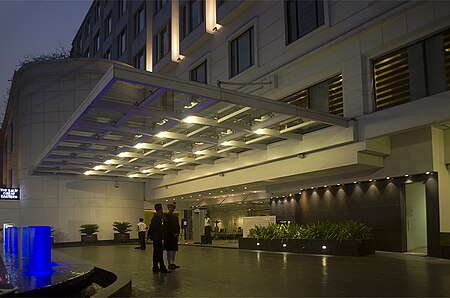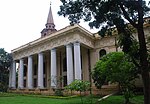Great Eastern Hotel, Kolkata
Hotel buildings completed in 1841Hotels in KolkataUse British English from April 2013

The Great Eastern Hotel (officially The LaLiT Great Eastern Kolkata) is a colonial era hotel in the Indian city of Kolkata (formerly Calcutta). The hotel was established in 1840 or 1841; at a time when Calcutta, the seat of the East India Company, was the most important city in India. Referred to as "the Jewel of the East" in its heyday, Great Eastern Hotel hosted several notable persons visiting the city. After India's independence in 1947, the hotel continued its business and later the state government took over the management. In 2005 it was sold to a private company and was reopened in November 2013 after an extensive renovation.
Excerpt from the Wikipedia article Great Eastern Hotel, Kolkata (License: CC BY-SA 3.0, Authors, Images).Great Eastern Hotel, Kolkata
Old Court House Street, Kolkata B. B. D. Bagh (Kolkata)
Geographical coordinates (GPS) Address External links Nearby Places Show on map
Geographical coordinates (GPS)
| Latitude | Longitude |
|---|---|
| N 22.5684 ° | E 88.3495 ° |
Address
The Lalit Great Eastern Kolkata
Old Court House Street
700062 Kolkata, B. B. D. Bagh (Kolkata)
West Bengal, India
Open on Google Maps








